Are you planning a vacation to Iceland this winter? Get ready for a unique and exciting adventure! For several compelling reasons, the winter months can be an ideal time to explore this enchanting Nordic island. Not only will you find more budget-friendly flights and accommodations, but you’ll also experience fewer tourists and an increased likelihood of witnessing the awe-inspiring Northern Lights.
Many people are hesitant to visit Iceland in the winter. While traveling to Iceland in the winter comes with some challenges, Geysir is here to assure you that with careful planning and thorough research, you can have an unforgettable and delightful experience during Iceland’s winter season. Before you start packing your warmest gear and mapping out your Icelandic itinerary, we’ve compiled a comprehensive list of frequently asked questions to equip you with the essential knowledge and confidence you need for an Icelandic winter vacation.
Here are the most common questions people have about visiting Iceland in the winter:
What’s the weather like in Iceland during the winter?
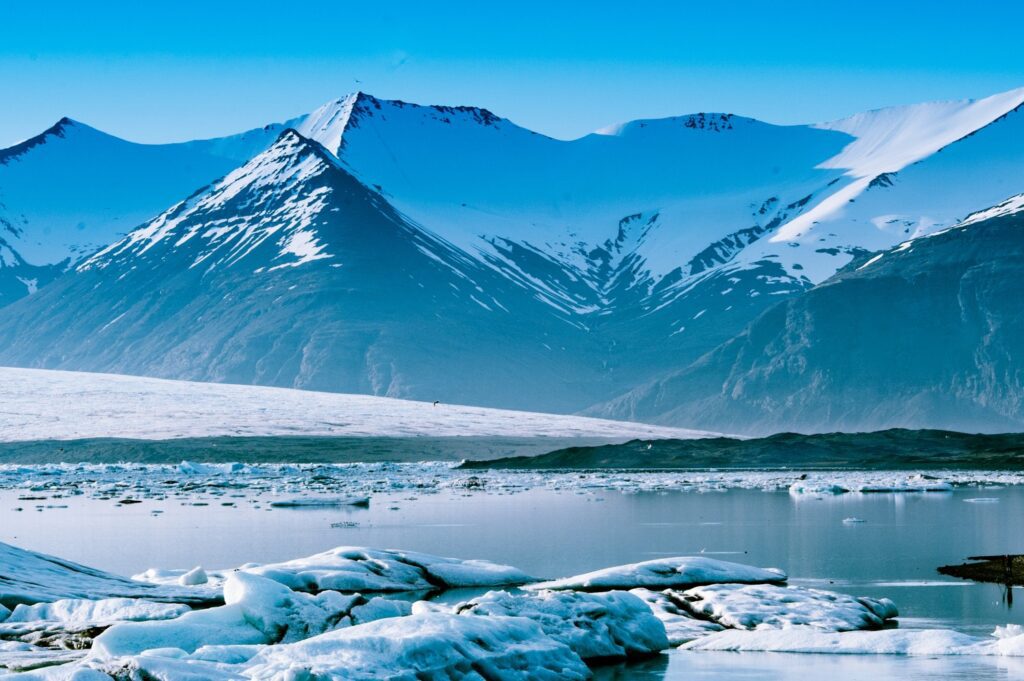
Winter in Iceland is cold, but it’s not that cold. In the coldest months, temperatures often hover around freezing 0 to -5C (20-35 F), which, compared to many places in the USA or Canada, is relatively temperate winter weather. Surprised? Even though Iceland is in the Arctic, its southern and western coasts lie directly on a branch of the Gulfstream, keeping the island at a more moderate winter temperature than most expect.
Navigating Iceland’s winter demands strategic planning due to its limited daylight. Combined with anticipated snow, sleet, and rain, you’ll need to arrange your days carefully to maximize daylight hours, and flexibility is key in coping with the ever-shifting weather conditions.
Do I need a visa or travel insurance for my winter trip to Iceland?
Visa requirements depend on your nationality. Visitors from the USA and Canada can stay in the Schengen Area for 90 out of 180 days. Since Iceland is a Schengen country, travel is visa-free.
Check with your country’s Icelandic consulate or embassy to determine if you need a visa. While not mandatory, travel insurance is always recommended when visiting the land of “Fire and Ice.” Iceland is no stranger to extreme weather conditions, like the 2010 eruption of Eyjafjallajokull volcano, which resulted in over 100,000 flight cancellations and a six-day travel ban affecting Europe. Those who did not purchase travel insurance covering flight delays and trip cancellations were left high and dry.
Given these unpredictable scenarios, comprehensive travel insurance offers valuable protection.
Make sure your policy covers all winter-related issues, including supplemental domestic health insurance while abroad, flight cancellations, baggage loss, medical emergencies, road closures, helicopter evacuation, and repatriation.
Is it possible to see the northern lights in Iceland in the winter?
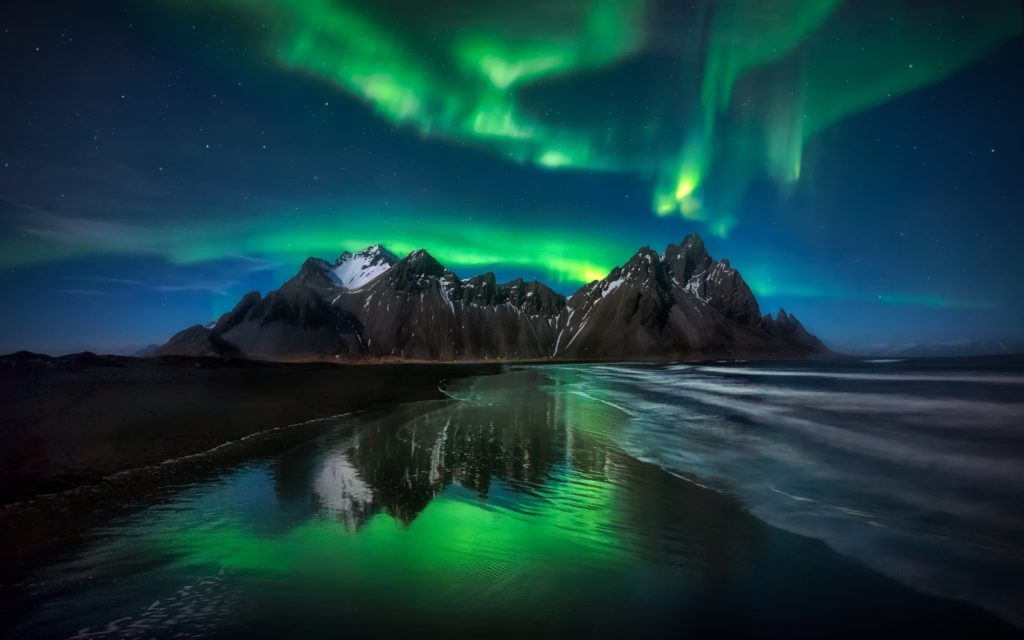
Absolutely! Many travelers are drawn to Iceland in the winter by the enticing promise of witnessing the northern lights. Opting to visit Iceland between December and March (or extending your visit from September to April) significantly enhances your odds of catching a glimpse of the elusive aurora borealis, as the dark, long nights only increase your chances of witnessing this natural phenomenon.
However, managing expectations is essential: there are no guarantees regarding the northern lights. Mother Nature makes no promises, and factors like cloud cover, rain, or the aurora’s intensity on specific nights can influence your experience.
If you’re on a quest to witness the northern lights in Iceland, having access to a car is a tremendous asset as you can seek out remote locations far from light pollution, which is necessary for optimal northern light viewing. Not into driving? Not a problem. Iceland has a wide array of northern lights guided tours for those who prefer to avoid driving.
What kind of clothing should I pack for a winter trip to Iceland?
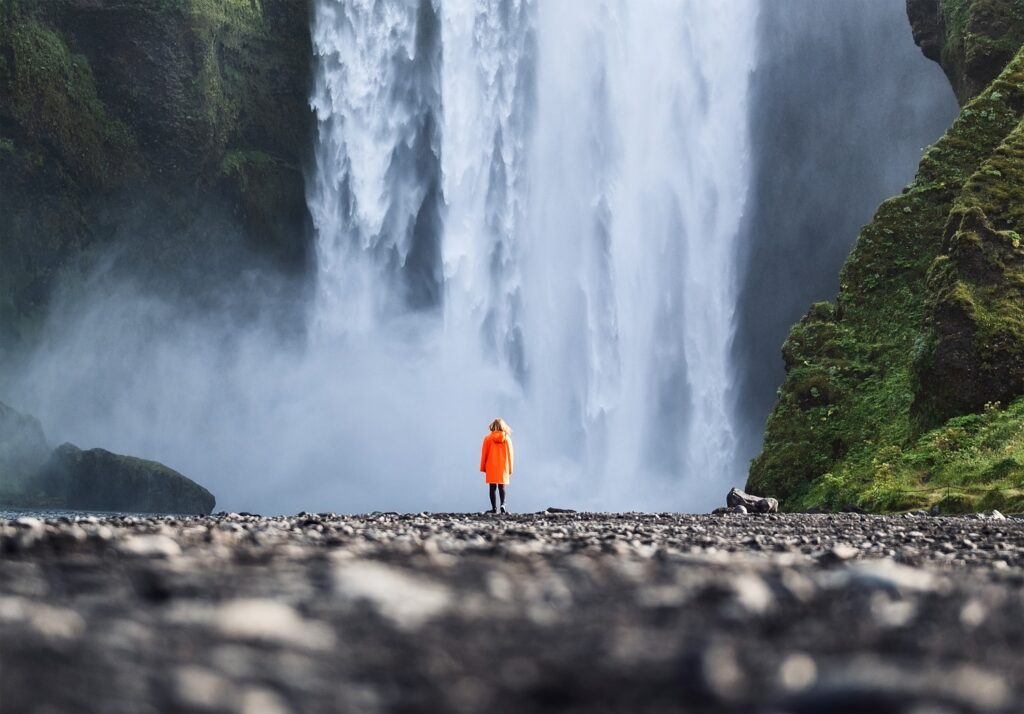
Layers, layers, layers! Staying warm for your trip is serious business. Exploring Iceland and experiencing the incredible winter activities requires being outside quite a bit. Your clothing choices can make or break your vacation. Standing on a glacier is not the time nor the place for high heels and ripped jeans. You’ll need clothing designed to trap warmth, and investing in high-quality winter gear is well worth it.
Staying in well-heated accommodations such as hotels, guesthouses, or cabins is also essential. Read the reviews, and avoid getting caught with unheated surprises.
Here’s a great packing list for your winter trip to Iceland:
- Waterproof/windproof Coat
- Thermal jacket made for layering
- Hiking pants and/or snow pants
- Thermal tops and leggings that can be worn under hiking/ski pants
- Scarf or balaclava
- Waterproof hiking boots
- Snow boots
- Snow gloves with removable liners
- Thermal/fleece or wool hat
- Merino wool socks
- Swimsuit (yes, really!)
- UV/polarized sunglasses
How do I get around Iceland in the winter?
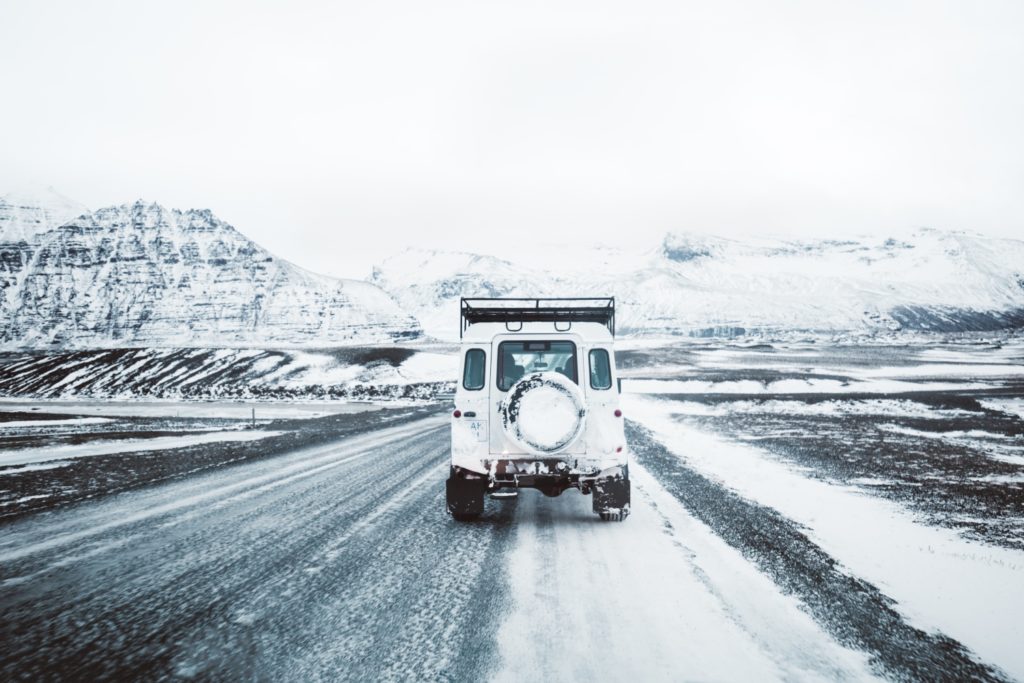
Many intrepid travelers rent a car and drive themselves around Iceland—even in the winter! Renting a four-wheel-drive (4WD) or all-wheel-drive (AWD) vehicle is recommended, especially if you plan to explore outside Reykjavik. The roads can be icy and challenging, so be prepared for winter driving conditions.
The “Ring Road” in Iceland circumnavigates the entire island. This main highway is nearly always open during winter. However, traveling in north Iceland during winter is only suggested if the weather is clear. Most winter road travelers concentrate on day trips from Reykjavik by driving the Golden Circle and focusing on southern Iceland.
Overall, renting a car and driving in Iceland in the winter can be safe as long as you stay informed and are prepared to encounter snow, icy roads, and limited daylight. When traveling beyond populated areas, staying up-to-date about weather conditions and ensuring your vehicle’s road readiness is crucial.
Letting someone know your travel plans and carrying emergency supplies is always a good idea. Above all, listen to the local’s advice, they know best!
If you’d rather have someone else behind the wheel, Iceland has numerous travel operators and tour guides to plan your vacation activities, leaving you to relax and enjoy the scenery.
Either way, before heading out for the day, always check the weather at Iceland’s official website to be prepared for all conditions.
Are all of the roads open in the winter?
If you plan on renting a car in Iceland, you can have an epic winter road trip as long as you understand the road conditions and accessibility.
As mentioned, the Ring Road, which encircles the island, remains open year-round, making it an ideal route for winter travel.
However, it’s essential to be aware of specific road closures during the winter. Roads labeled as “F Roads” and “H Roads” are typically off-limits in the winter due to weather conditions. Certain regions, like the Highlands and the Westfjords, become largely inaccessible in the winter. Additionally, many mountain roads remain closed until the end of June or longer due to snow and muddy conditions.
Managing expectations is necessary if this is your first and possibly only trip to Iceland. While the winter season limits access to some areas, you can still explore iconic destinations like the Golden Circle and Vik, where the snowy landscape adds a magical touch.
For many adventurous travelers, winter travel is perfect for experiencing Iceland. Still, it may not be the best choice for travelers with a long bucket list of destinations unreachable during winter.
Does Iceland have winter driving rules or restrictions?
Navigating Iceland’s winter roads demands attention to specific rules and considerations, ensuring a safe and enjoyable journey. Throughout your road trip, you’ll encounter special warning signs indicating potential hazards, like sharp bends.
However, unlike some countries, Iceland doesn’t typically have separate speed limit signs. The general speed limits in Iceland are set at 50 km/h in urban areas, 80 km/h on gravel roads in rural regions, and 90 km/h on asphalt roads. It’s your responsibility to adjust your speed according to the road conditions.
Icelandic law mandates headlights’ use at all times, regardless of day or night, and passengers in both front and rear seats must wear safety belts, as this is a legal requirement. As expected, drinking while driving and using a mobile phone are strictly forbidden.
While major highways are typically paved, you might be surprised to learn that a significant portion of Iceland’s road network comprises gravel roads. These gravel roads can vary in condition, with occasional potholes or washboard surfaces.
While they often provide a decent ride, caution is vital when driving on loose gravel. Passing other vehicles should be approached with caution to prevent potential car damage caused by sand and small rocks, such as windshield cracks or paint damage.
Thinking of going on an off-road adventure? Think again. Iceland enforces strict laws against off-road driving, and venturing off designated roads is strictly prohibited.
Due to short summers, the country’s fragile soil and vegetation make it highly susceptible to lasting damage from tire tracks. Keep yourself and Iceland safe for everyone.
Are the popular tourist attractions open in the winter?
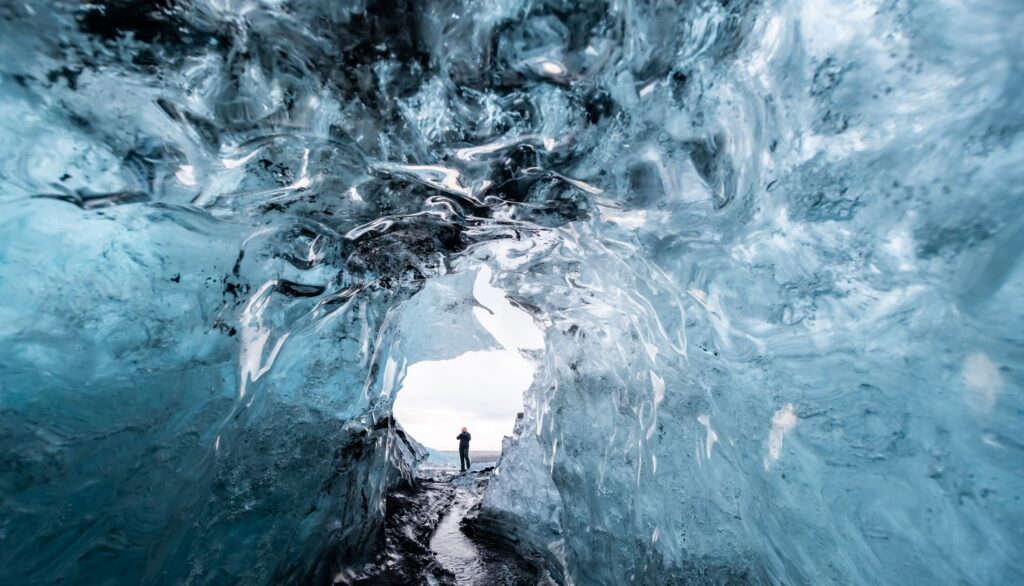
There’s no reason to be concerned about missed opportunities to explore the sights in the winter. The country’s spectacular attractions, from the Golden Circle to numerous waterfalls, are open all year round. Winter adds a new charm to the scenery, with snowy mountains and icicles adorning the cascades.
Visiting Iceland in winter also means snowmobiling, dog sledding, exploring ice caves, and seeing the aurora borealis —experiences mostly unavailable in the summer.
A fantastic bonus of winter travel in Iceland is the perpetual presence of the “golden hour” light. This sunset-like illumination casts a captivating glow upon the snowy landscape, adding an extra layer of magic to your Icelandic winter escapade.
*Iceland’s many attractions remain open year-round, although some may have reduced winter hours or accessibility due to weather conditions. Always check the opening hours and road conditions before heading out.
Can I visit the Blue Lagoon in the winter?
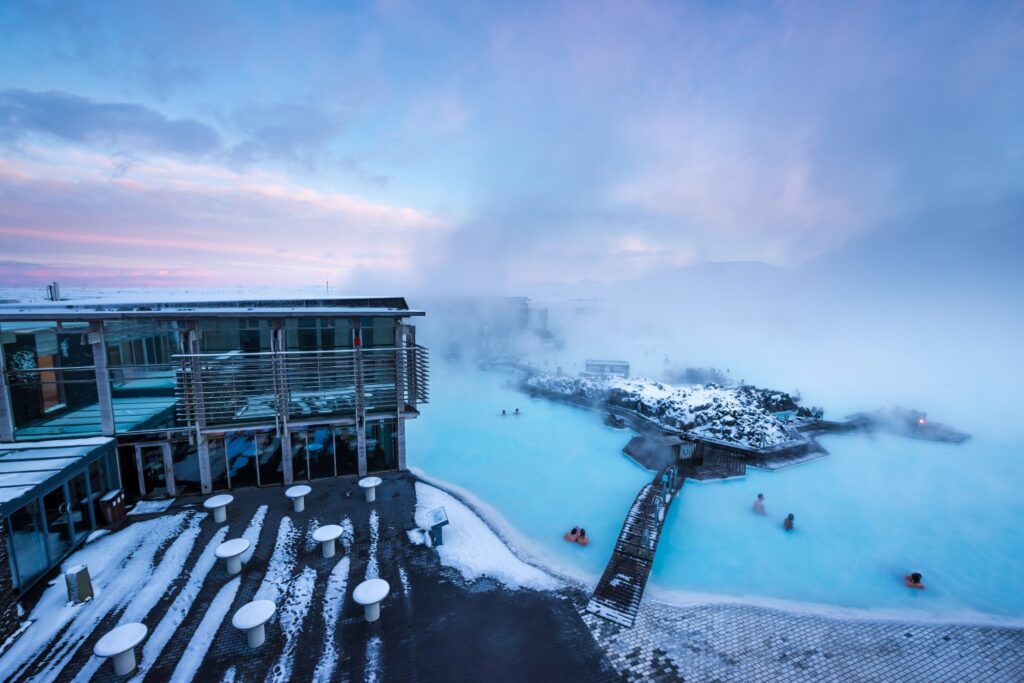
The Blue Lagoon, a popular destination for winter travelers, is not only open year-round, it’s even better during the winter because there are fewer tourists. Plus, it’s a great way to warm up during the dark days. While the weather outside might be freezing, soaking in the geothermal (102 F / 39 C) mineral-rich waters of the Blue Lagoon can be particularly enjoyable in the winter.
If you time your spa visit just right, you might even be lucky enough to see the northern lights while swimming in the Blue Lagoon!
Are there any winter festivals or events in Iceland?
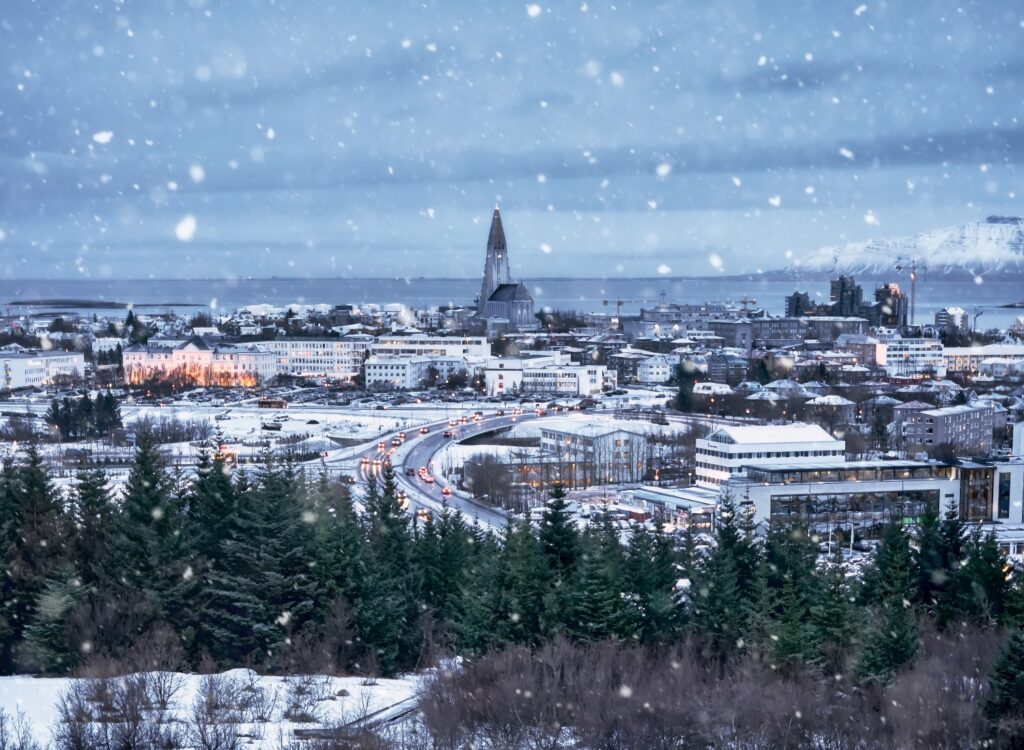
As the winter days are long and dark, Iceland really ramps it up with numerous winter festivals and cultural events. With so much going on, you’ll have a hard time choosing which month to visit.
From the Northern Wave International Film Festival in November or February’s Winter Lights Festival, including Museum Night, Swimming Pool Night, and Trail of Lights, there’s always something exciting to check out in Iceland.
Explore more at the Visit Iceland event calendar for specific dates and activities.
Is Iceland Worth Visiting at Christmas?
Did you know that Iceland doesn’t have just one Santa Claus? Instead, children can look forward to the eve of December 11 when 13 mischievous little trolls (Jólasveinar, in Icelandic) start visiting, bringing gifts and perhaps causing a bit of trouble!
If you don’t catch sight of the holiday trolls, you’re still in luck, as you’d be hard-pressed to find anything more festive than the Christmas Village markets in Reykjavik for your December holidays. There’s something for everyone with ice skating rinks, live concerts, children’s activities, quaint, cozy wooden cottages selling local crafts, and, of course, plenty of great food and hot drinks.
Icelanders love to decorate their homes, shops and streets with thousands of gorgeous, twinkling fairy lights for the holiday season. While the days are short and dark, you’ll have plenty of light to keep you in good spirits.
In keeping with Icelandic tradition, most locals celebrate with a typical family meal at home early on Christmas Eve and give each other a traditional book gift (“Jólabókaflód” in Icelandic). Afterwards, most people will stay home for the evening reading with their family, while others may venture out for midnight mass.
Christmas day is for relaxing and entertaining with family.
If you plan to spend the Christmas holidays in Iceland, please be aware that starting December 23 until December 26, nearly everything is closed around Christmas, including supermarkets outside Reykjavik. If you travel over the holiday season, make restaurant reservations far in advance, as many places will be closed.
We hope you enjoy your trip to Iceland this winter and have a fantastic time in our beautiful country. If you’d like to learn more about what Iceland offers, check out the rest of our blogs.
Back